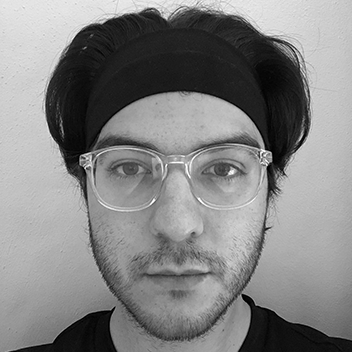Reflecting on housing inequalities after our first conference (and some Christmas TV-binging)
Posted on 04-01-2023
Author
To both critical and popular acclaim, the second season of White Lotus reached its paroxistic finale just before Christmas. Shouldn’t we all be thankful to be living under the benevolent rule of what many a cultural pundit has called peak TV?[1] It’d just be too facile to praise the unforgettable performances of Simona Tabasco and Sabrina Impacciatore or the impeccable writing of Mike White. So it is not that I will be doing. Following our European scholarly mandate, one should talk about housing (and the first Re-Dwell Conference taking place in Grenoble), and that’s what I shall be doing, after a quick detour. Beware spoilers await.
At one point in White Lotus’ last episode, Quentin, an English expat integrated in Palermo’s high society complains about the expenses he incurs to maintain his palazzo. Here is some visual reference as a suggestion for future research[2], throwing it out there for a case study. Quentin’s lament is: “We’re here on earth such a short time but our houses live on, we must be good stewards”. [Spoiler alert] This would suggest a noble heritage preservation pursuit. However, the maintenance of his palazzo has led him to devise a ruse to kill Tanya, played by the household favourite Jennifer Coolidge, and partake in the inheritance of her wealth with his lover, Tanya’s own scheming husband! Far-fetched as it seems, I argue that at the heart of White Lotus lie a set of multifaceted housing and wealth inequalities issues.
As Martina’s and Joris’s research shows, experiences of housing unaffordability, exclusion and material deprivation are most acute among the young. However, what are the consequences of extreme (housing) inequalities for those who do not suffer them in their crudest form? Can one suffer the consequences of a polarising world from a palazzo? Indulge me in a perennial fascination with wealth and accompany me to another palace. This time located in Paris, 63 Rue de Monceau more precisely.
There, in front of the Parc Monceau stands the superb mansion Moïse de Camondo built for his 18th-century art collection and his family. Yes, in this particular order since the house was specially designed to house his collection of art-decorative artefacts first. Originally from Constantinople, Camondo became, together with his brother, the leaders of one of the most powerful banking dynasties of the Third French Republic.
While studying the financialisation of real estate, one can quickly fall under the impression that this is a recent phenomenon. However, speculation with real estate prices has been a defining feature of urban development. Camondo’s palace standing in the Parc Monceau was in fact built during a speculative frenzy on formerly public land. Zola described the mansion of one of his leading characters in his novel La Curee as follows:
« Saccard venait de faire bâtir son hôtel du parc Monceau sur un terrain volé à la Ville. Il s’y était réservé, au premier étage, un cabinet superbe, palissandre et or, avec de hautes vitrines de bibliothèques, pleines de dossiers, et où l’on ne voyait pas un livre ; le coffre-fort, enfoncé dans 257 le mur, se creusait comme une alcôve de fer, grande à y coucher les amours d’un milliard. »
Although elaborating over Zola’s writing on housing speculation deserves much more academic attention, and in fact, it has directly inspired the work of the economist Piketty, let’s go back to Camondo. After his death, Camondo donated his house and art collection to the French State under the specific provision that it would become a museum in honour of his son Nissim, killed in WWI. During his lifetime, Camondo became a patron of the arts, donating to a number of Parisian museums and advocating for the integration of Jews French society even in the face of rampant anti-semitism. A few years after Camondo’s death his few descendants left alive were brutally assassinated in Auschwitz.
In his recent book “Letters to Camondo” Edmund de Waal, a far relative of Camondo explores the feelings of loss at the violent death of his ancestors and the state of prosecution they suffered:
“And I had to say why this moment mattered. That this was not waiting for someone to give us back what had been stolen, with violence, with terror. That breaking up, our dispersion, our diaspora. That fracture of the four Ephrussi children to four continents of the world, the suicide of their mother, their father a refugee, the murder in the labour camps of uncles and aunts. This wasn’t about art. It was what art carries. This was restitution: a bringing back of something taken.”
― Edmund de Waal, Letters to Camondo
The sentence we’re here on earth such a short time but our houses live on, acquires a new significance in the case of Camondo. His house is a testimony to the efforts to fit in of an outsider who was never accepted. Houses themselves are integral to how we present ourselves, an embodiment of the times and our place in society. This is precisely why these mansions are scars, for those who were never allowed to belong, who were robbed and had their descendants killed. This bears questions about what kind of limitations societies focusing on luxury real estate put on integration.
And just like that… the long shadow of anti-semitism and the many other hatreds brought by the far right rise once again in Europe. One cannot help to wonder how much at odds with ontological security extreme inequalities are. Redistribution may cost us a few of the contemporary equivalent of 18th century Palermitan palazzi, maybe a couple of start-architects villas? Nevertheless, it is indispensable if we are to produce egalitarian and democratic urban environments.
[1] https://www.theguardian.com/culture/2020/jan/04/thought-wed-reached-peak-tv-just-wait-until-you-see-what-2020-has-in-store
[2] https://www.architecturaldigest.com/story/the-white-lotus-sicilian-villa-episode-5

